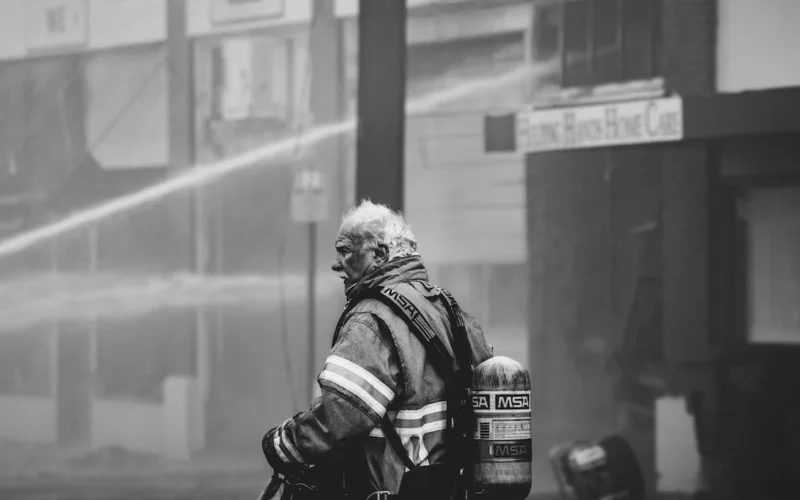The use of Aqueous Film-Forming Foam (AFFF) in firefighting has been hailed for its effectiveness in combating flammable liquid fires. However, behind the lifesaving properties of AFFF lies a complex web of legal challenges and environmental concerns. Across the United States, a wave of lawsuits has emerged, spotlighting the alleged adverse impacts of AFFF usage.
This article goes into the heart of the matter, providing a comprehensive roundup of major AFFF lawsuits.
PFAS Contamination Concerns
Per- and polyfluoroalkyl substances (PFAS) have taken center stage in the AFFF foam lawsuit. This has triggered significant legal actions due to the chemicals associated with environmental and health risks.
According to TorHoerman Law, AFFF was designed as a Class B foam for combating gasoline fires. It employs a synthetic, water-based surfactant to smother fires and deprive them of oxygen, effectively preventing combustion.
Historically, AFFF gained widespread usage among fire departments, military entities, and airport fire prevention units due to its unparalleled efficacy in firefighting. Mandated by the FAA until 2018, AFFF’s prolific use preceded the surge in lawsuits against its manufacturers.
Forbes reports that suspicions about the link between PFAS and cancer have existed for decades. However, public awareness remained limited until the EPA released a statement in 2009. The delayed disclosure left many exposed individuals unaware of potential health threats.
Additionally, recent revelations indicate that manufacturers like 3M and DuPont have been aware of the potential toxicity of PFAS since the 1960s. This provides a foundation for negligence and liability claims in personal injury lawsuits.
The legal landscape surrounding AFFF has further evolved with the release of multiple studies, some conducted by government agencies. These studies consistently affirm or expand upon the connection between PFAS exposure and various forms of cancer.
Each study’s findings fortify the cases brought forth by plaintiffs. They contribute to a mounting body of evidence that strengthens the legal standing of plaintiffs in the AFFF litigation.
Firefighters and AFFF Lawsuit
Major lawsuits revolving around firefighters have emerged as a focal point in this legal battle against contamination issues. The case of Gary Flook, as reported by the Chicago Sun-Times, epitomizes the profound impact of AFFF foam usage on firefighters.
Flook, a dedicated Air Force firefighter for 37 years, regularly trained with AFFF at military installations. Unbeknownst to him, the frothy white fire retardant, highly effective in firefighting, was later revealed to be toxic.
Flook’s journey unfolded tragically in 2000 when, at the age of 45, he received a diagnosis of testicular cancer, necessitating surgery and chemotherapy. His case is emblematic of the hundreds of lawsuits filed against companies manufacturing firefighting products and the chemicals within them.
Notably, firefighters, both military and civilian, have reported higher rates of testicular cancer compared to other occupations. This was attributed to the presence of PFAS in AFFF.
A groundbreaking federal study has now established a direct link between the PFAS chemical found in the blood of numerous military personnel and testicular cancer. This revelation validates the concerns raised by firefighters like Flook and strengthens the legal arguments in the ongoing lawsuits.
The correlation established by this study marks a significant milestone. It brings scientific support to the claims of those who have suffered health consequences due to their exposure during firefighting duties.
Community Water Contamination Cases
Water contamination cases stemming from AFFF usage have become a focal point in the legal battle against PFAS. As reported by Bloomberg Law News, numerous states have taken legal action against chemical manufacturers. These states allege that PFAS, present in AFFF, has contaminated drinking water and violated state laws related to consumer protection and public nuisance.
Eight states, including Arkansas, Pennsylvania, New Mexico, Oregon, Washington, Arizona, Maryland, and Rhode Island, filed lawsuits against chemical manufacturers. These legal complaints underscore the broader environmental impact of AFFF. They note its role in contaminating water sources near airports, firefighting training facilities, and industrial sites.
Notable defendants in these cases include DuPont de Nemours Inc., the Chemours Co., Corteva Inc., and 3M Co. These companies have been involved in or are reportedly working on billion-dollar-plus settlements in a federal multidistrict AFFF case.
Delaware, according to Delaware Business Times, joined the wave of legal action. Attorney General of the state, Kathy Jennings, has filed a lawsuit against 14 companies. The lawsuit alleges that specialized firefighting foam produced by these companies, containing “forever chemicals,” has leached into soils and aquifers, posing environmental and health risks.
Similarly, as reported by Star-Advertiser, Hawaii Attorney General Anne Lopez filed a lawsuit against 25 manufacturers of PFAS. The state alleges that these companies, including 3M Co., DuPont de Nemours Inc., and Tyco Fire Products LP, concealed the chemicals’ serious risks to human health and the environment. The lawsuit seeks accountability for the harms caused by PFAS contamination in Hawaii.
These legal actions underscore the consequences of AFFF foam usage, extending beyond immediate firefighting applications to impact communities through water contamination. The lawsuits serve as a critical avenue for affected states to seek compensation and remediation for the harm suffered.
In conclusion, the surge in AFFF lawsuits paints a stark picture of the environmental and health ramifications stemming from PFAS contamination. As states and individuals grapple with the aftermath of AFFF usage, legal actions against chemical manufacturers aim to hold polluters accountable.
These lawsuits, whether centered around firefighters, communities facing water contamination, or state-led initiatives, represent a crucial battleground in the fight against “forever chemicals.”
In the pursuit of justice and environmental stewardship, the significance of these legal battles cannot be overstated. They serve as a beacon, illuminating the path toward corporate responsibility and the protection of public health.
It is paramount for individuals to stay informed about AFFF foam lawsuits and actively support endeavors for stricter PFAS regulations. Through collective awareness and advocacy, we can contribute to a future where the dangers of PFAS contamination are mitigated and responsible corporate practices prevail.
The call to action is clear: let us remain vigilant, champion environmental accountability, and work together to ensure a safer, healthier future.










